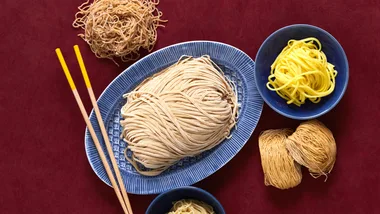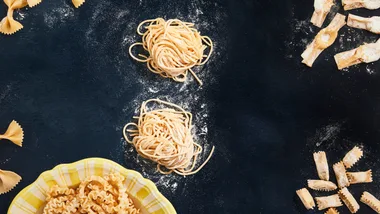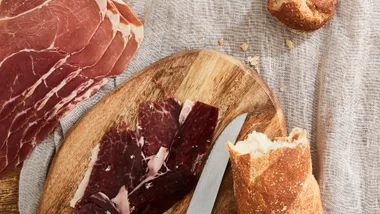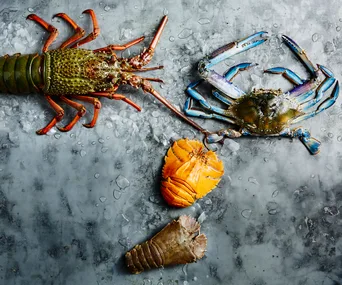“Press your tongue against the roof of your mouth,” the queen is saying. “There. The caviar melts and becomes very creamy around your mouth. You will feel the salt, the first impression, then inhale and you will feel the scent of the sea. When you swallow, at the top of your palate you will find the egg-like yolk, and at the sides of your tongue when you finish, like you’ve eaten walnuts, green walnuts. Hazelnuts.” She smiles.
You know, of course, that sturgeon eggs are never spooned from their tins with anything but inert materials – horn, glass, mother of pearl, even plastic, but never steel or silver – but what the queen is talking about is the next step: how the professionals taste caviar.
Rest a spoonful on your hand in the indentation that forms about an inch back from the webbing between your thumb and forefinger when they’re spread apart, she says, then wait until the caviar no longer feels cool against your skin; this, says the queen, is the ideal temperature for a tasting.
“First you play with the roes with your tongue. Roll them around a little bit, and then you squeeze.”
The queen of caviar is Sara Morales, and her official, if somewhat less regal title is general manager of Garamond International, the firm that sells the Yasa caviar produced by Abu Dhabi’s Emirates AquaTech. It’s quite possibly the most expensive and ambitious fish farm in the world, and it’s devoted to luxury, giving over the space of 10 football fields to the production of Siberian sturgeon. Alain Ducasse has given it his endorsement, and locally it’s already been picked up by the likes of Sepia, Rockpool and Flying Fish.
Shipped to order, this is the only fresh caviar available in the world year-round, and Morales is a thoroughly convincing spokesperson for the virtues of caviar in general and Yasa in particular.
“If you don’t eat anything for a few minutes after tasting this, you’ll still know that you’ve eaten caviar – that’s what you’re looking for, that length of flavour, the way the taste remains in your mouth for a long time.” All three grades have pronounced freshwater character, with no fishiness, residual or otherwise.
And what about tasting in a non-professional capacity? Morales is all for the classics – toast, eggs, boiled baby potatoes and the like – but she’s also no stranger to experimentation. Take, for instance, her views on pairing caviar with wine: “Caviar is eaten with the local drink. In Russia that means vodka; in Iran, water; in France, Champagne. And in Japan, sake. And the best marriage with caviar is a good sake, a light, fresh one. If you ever have the chance to try it, please do. I find Champagne can be a little bit aggressive with caviar, but don’t get me wrong – they’re nice to have together. But the better combination, for my palate anyway, is sake.”










